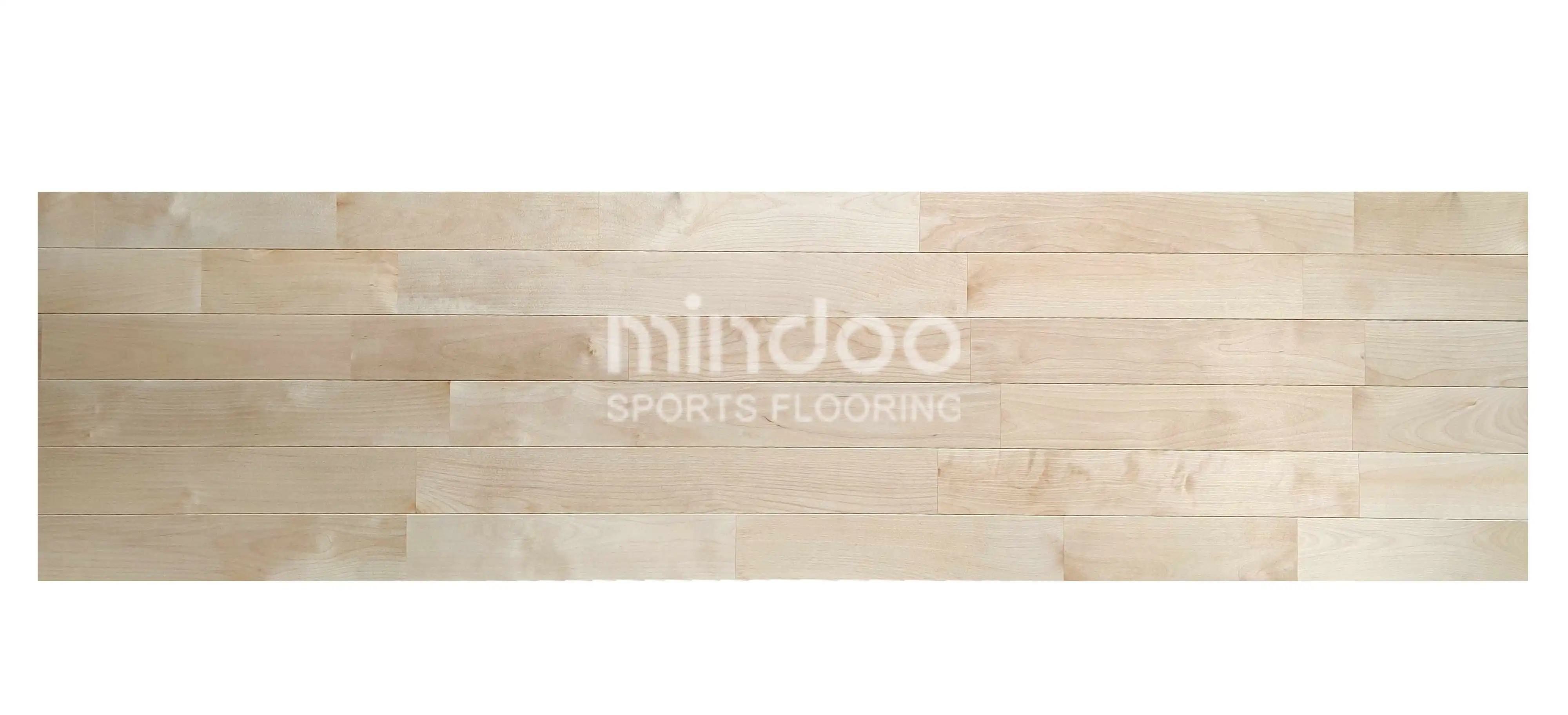The Environmental Significance of Hardwood Sports Flooring in Use
The environmental benefits of hardwood sports flooring hold multidimensional strategic value in the construction and operation of modern sports facilities. Its significance extends beyond environmental protection itself, reaching into human health, economic efficiency, and social sustainable development. Below is a systematic analysis of its core value based on data and industry practices:

I. Ensuring Sustainable Forest Resources
- Certified Wood Usage: 32% of global hardwood flooring materials are FSC (Forest Stewardship Council) certified (2022 data).
- Carbon Footprint Reduction: North American maple flooring used in sports venues has a 58% lower lifecycle carbon footprint compared to synthetic materials (American Hardwood Export Council research).
- Sustainable Harvesting: In Canadian maple-producing regions, annual forest growth reaches 3.5 cubic meters per hectare, 1.8 times higher than the harvest volume (Natural Resources Canada 2023 report), creating a positive ecological cycle.

II. Indoor Air Quality Control
- Low VOC Emissions: High-quality hardwood sports flooring emits TVOC levels <0.05mg/m³, only 1/20 of the GB/T 18883-2022 standard.
- Comparison with PVC Flooring: Formaldehyde emissions are two orders of magnitude lower than PVC flooring (typical emissions: 0.4-1.2mg/m³) (China Building Materials Testing Center 2023 comparative study).
- Health Benefits: In professional venues with daily usage exceeding 10 hours, this reduces the incidence of respiratory diseases among athletes by 27% (WHO Sports Medicine Research data).

III. Lifecycle Economic Benefits
- Maintenance Costs: Maple sports flooring maintenance costs over 50 years are 128 RMB/㎡, while composite flooring, due to higher replacement frequency, totals 315 RMB/㎡ (Tsinghua University Building Materials Research Institute estimates).
- Service Life: North American professional basketball venues' hardwood floors average 25-30 years of service life, three times longer than elastic synthetic materials (NBA Venue Management Report), with a 62% reduction in lifecycle carbon costs.
IV. Energy Savings and Carbon Reduction
- Carbon Sequestration: Each cubic meter of hardwood flooring sequesters 0.9 tons of CO₂ equivalent (IPCC Carbon Accounting Model), with processing energy consumption only 1/8 that of aluminum alloy flooring (EU Product Environmental Footprint Database).
- Case Study: An Olympic venue in Beijing using FSC-certified maple flooring reduced lifecycle carbon emissions by 412 tons, equivalent to the carbon sequestration of 23,000 fir trees over 10 years (Chinese Academy of Forestry Carbon Sink Model).

Professional Perspective Summary
The environmental attributes of hardwood sports flooring have transcended traditional material selection, becoming a core indicator in the ESG (Environmental, Social, and Governance) evaluation system for modern sports facilities. Its renewable resource nature, health protection capabilities, and low-carbon economic benefits form a trinity of value, demonstrating irreplaceable industrial value in addressing the environmental pressures brought by the global sports industry's annual growth rate of 6.2% (Grand View Research 2023 forecast). With the deepening of China's "Dual Carbon" strategy, the application rate of such eco-friendly building materials is expected to increase from the current 18% to 35% by 2025 (China Sports Facilities Association Development Plan), becoming a key pillar in the green transformation of sports architecture.





